
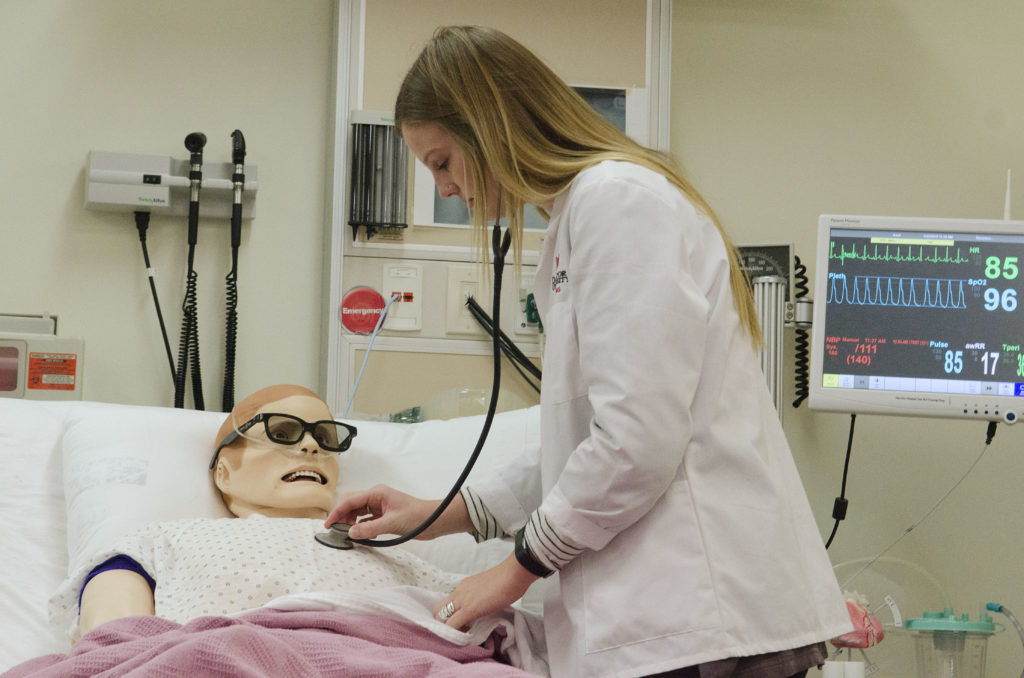
A small group of College of Health Professions students are at the bedside of a patient experiencing signs of a stroke. Together, they ask him questions, speak to the family, work toward a diagnosis and provide care.
It’s just another day in the lab with the human patient simulators.
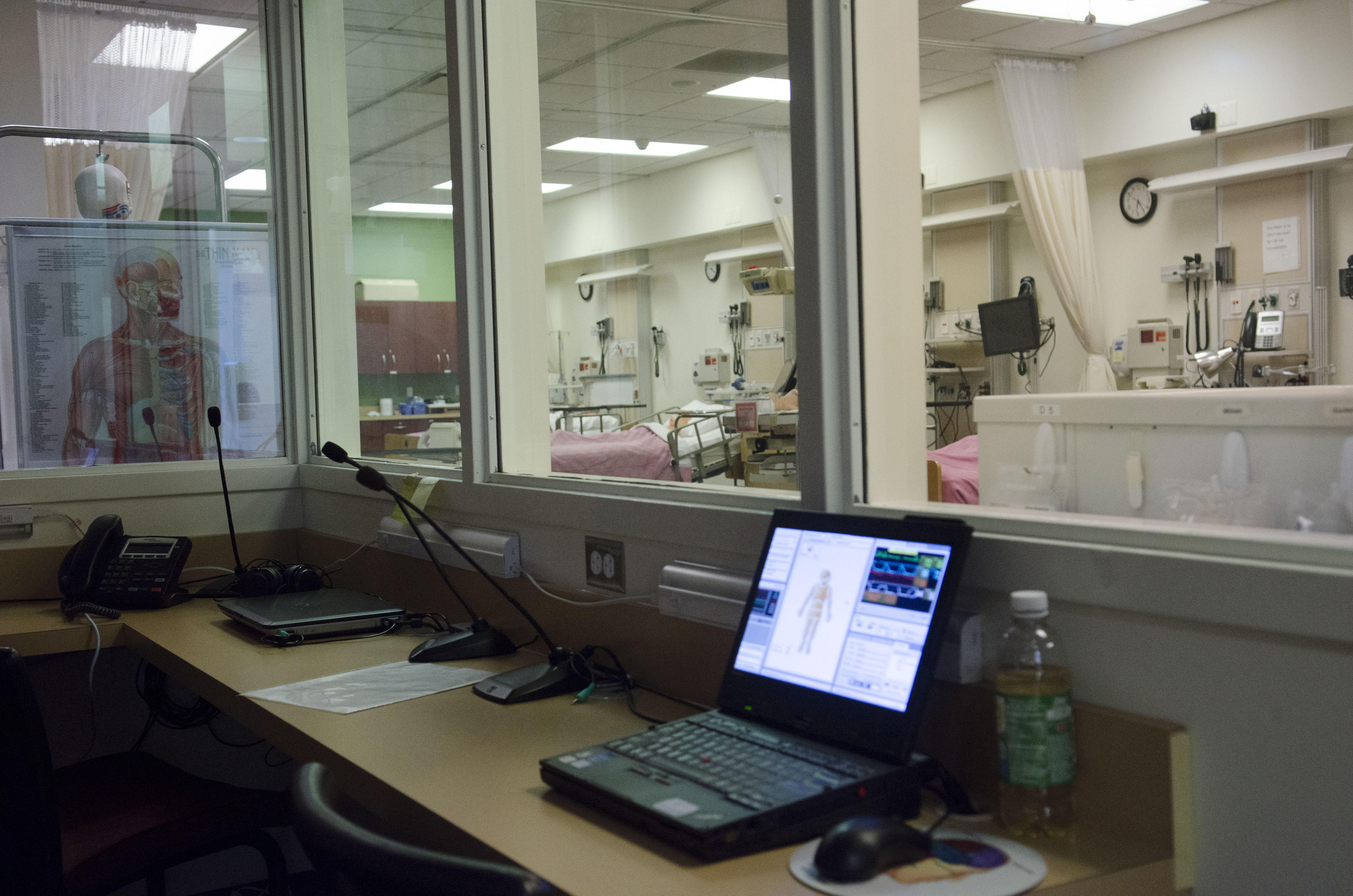 “They have pulses and heartbeats,” said Karen Daley, dean of DU’s College of Health Professions. “They blink, bleed and speak. They can die and you can revive them. The human patient simulators help students gain confidence and connect their practice to real-world situations.”
“They have pulses and heartbeats,” said Karen Daley, dean of DU’s College of Health Professions. “They blink, bleed and speak. They can die and you can revive them. The human patient simulators help students gain confidence and connect their practice to real-world situations.”
Ashley VanderHorst, a nursing student from Caledonia, Michigan, chose DU’s nursing program because of the small class sizes and student-to-staff ratio.
“Davenport’s nursing program is a fantastic program that allows students to gain their BSN in four years,” VanderHorst said. “I am feeling more and more prepared to take my final state boards as the program continues to progress. The simulators are such a great tool that Davenport offers. The sim man can basically do anything a normal human can do — including give birth, vomit and cough. We are able to practice all sorts of different patient scenarios and how to respond to them as nurses.”
Why simulations educate better health professionals
Fifteen years ago, Daley noticed that the lecture model wasn’t working in nursing schools. After running her first simulation, she knew leveraging technology to help students learn was the key.
“The very first time I ever threw a simulation I had a new human patient simulator on a stretcher and no equipment,” she said. “I didn’t know what was going to happen. I pressed the button so the simulator flatlined and lost his heartbeat. They immediately went into an ER scenario with pretend defibrillators, going through all the motions. I finally hit the button so the patient’s pulse came back and they were hugging and crying. I thought, ‘This is it. We can teach this way.’”
Daley has been on the forefront of using simulations in the classroom to prepare students in health professions careers. As an expert in conducting simulations, she served as co-editor of Simulation Scenarios for Nursing Educators — the third edition of which was published this year.
DU has labs and computerized simulators at its campuses in Grand Rapids, Warren, Lansing and Midland. They are used by students in nursing, medical assisting, health information management and health and human services case management.
“What we do at DU is really tremendous,” Daley said. “At some colleges, students get only one day of simulation each week. We do it every day. We are harnessing the power of technology with health, anatomy, physiology and nursing, and bringing it all together.”
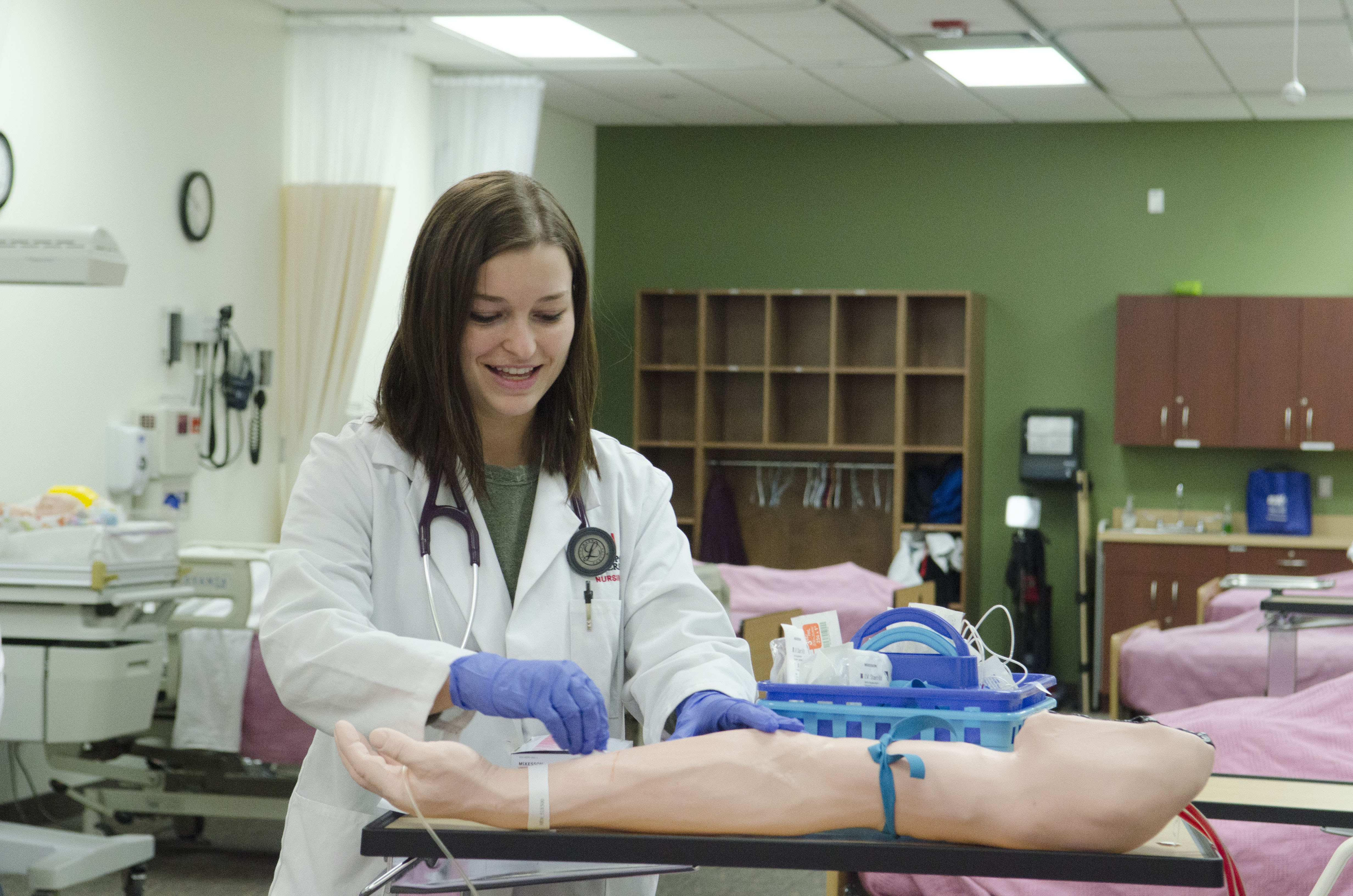 Grand Haven nursing student Taylor Wilson said the program is making her a better nurse and person.
Grand Haven nursing student Taylor Wilson said the program is making her a better nurse and person.
“The human patient simulators help me learn by forcing me to think like I was actually in a patient’s room,” Wilson said. “You have to really do a full assessment while also having bedside manner to make the ‘patient’ comfortable. The patient has real sounds, vital signs and responses that adds a real life quality that you can’t get in a general skills lab.”
The human patient simulators also allow students to learn from their mistakes.
“One of the most memorable simulations that I have experienced is when the scenario included putting an IV into a dummy arm,” she said. “After a while the simulator patient stated his arm was getting numb and I realized I had left the tourniquet on. It was an easy mistake to make, but it made me very aware of what I did wrong and allowed me to learn this lesson on a simulator instead of a real patient.”
An international collaboration
Daley’s book — Simulation Scenarios for Nursing Educators — helps nursing educators through the process of setting a foundation for simulations, running simulations and debriefing with students.
Simulations shared in the book are broad, covering common scenarios — such as postoperative care following an appendectomy and advanced cardiac life support — to specialty scenarios in obstetrics, pediatrics, elderly patients, mental health and even humility.
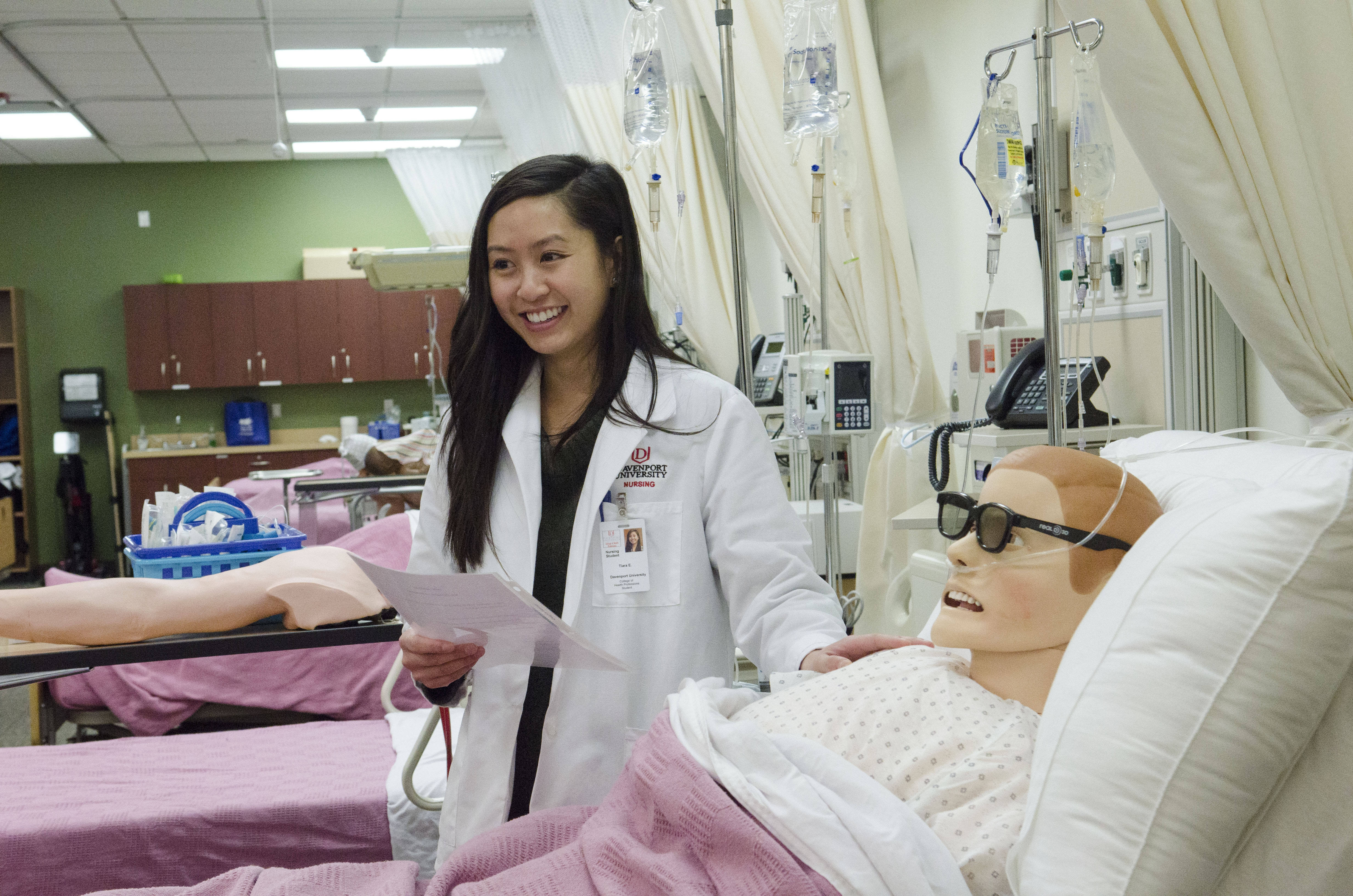 Many scenarios are tough, giving students a taste of some of the experiences they may have once they enter the profession. In the interdisciplinary and interprofessional scenarios, students may be helping a mother with a placental abruption after a car accident, providing end-of-life care for a teenager, or responding to a natural disaster.
Many scenarios are tough, giving students a taste of some of the experiences they may have once they enter the profession. In the interdisciplinary and interprofessional scenarios, students may be helping a mother with a placental abruption after a car accident, providing end-of-life care for a teenager, or responding to a natural disaster.
Interprofessional simulation scenarios have become a key learning opportunity both within DU’s courses and in the book to help students learn how to effectively work in teams, Daley said.
“Simulations have an amazing effect to boost learning for all health professionals,” Daley said. “The ability step in and understand the roles of others is key. Many of our health pros are going to need to know more than one discipline as more baby boomers begin to need care.”
The book features chapters contributed by nursing educators from around the world, including faculty in Brazil, China and Canada, as well as faculty from Columbia University, New York University, Michigan State University and Grand Valley State University.
DU has about a dozen human patient simulators across its campuses, including a pregnant female patient that can give birth, as well as infant and child-sized patients.
“One of the things about being a dean is you don’t ever want to become a pure administrator,” Daley said. “You want to make sure you are firmly rooted in whatever your discipline is but also have the ability to see what is happening on the healthcare front.”

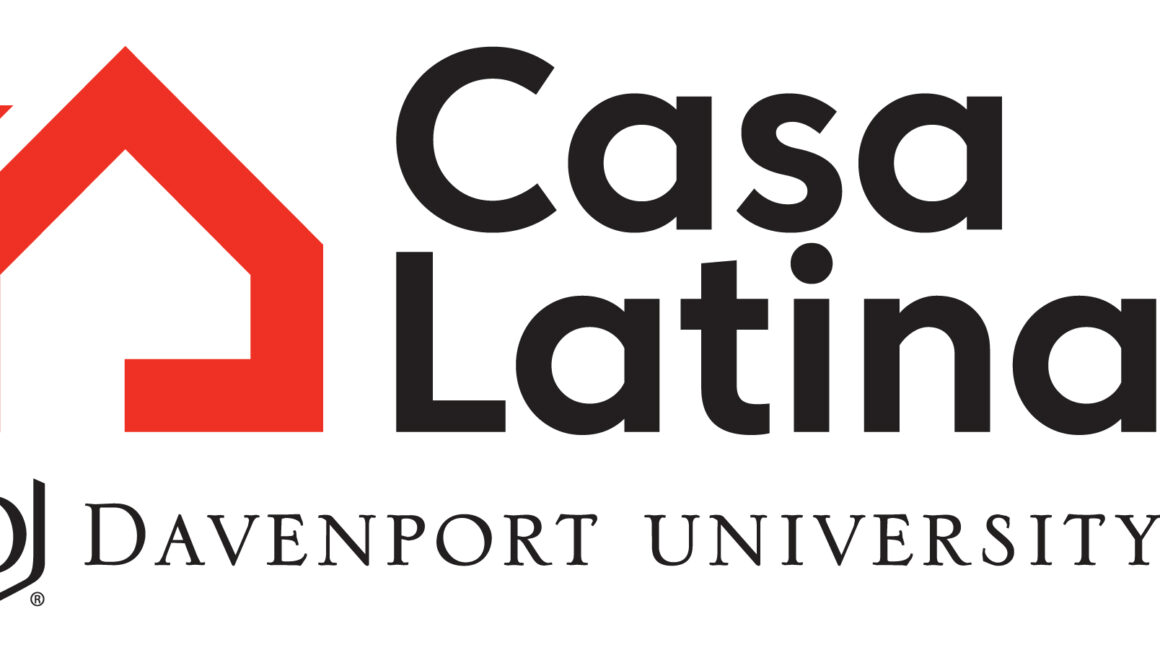

No Responses